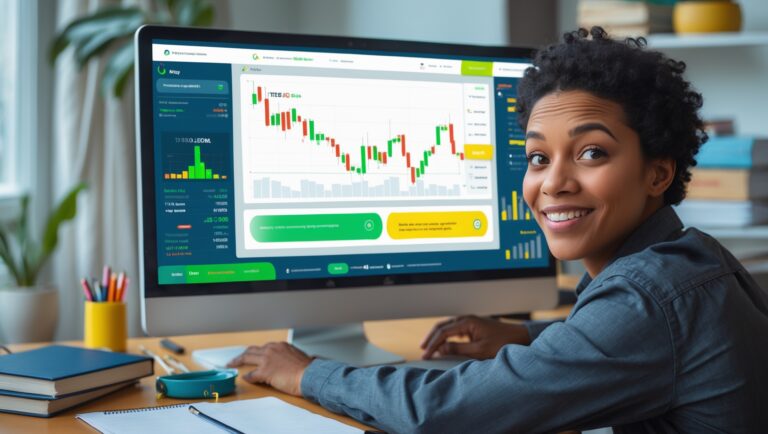The Real Reason I Stopped Using Indicators — And Started Profiting
The Real Reason I Stopped Using Indicators — And Started Profiting
For a long time, I thought technical indicators were the key to trading success. RSI, MACD, Bollinger Bands — you name it, I had it on my chart. My screen was cluttered with flashing lines, arrows, and signals that promised to tell me when to buy and when to sell. But over time, something became clear: I wasn’t actually getting better. I was getting more confused.

Table of Contents
Indicators Gave Me Conflicting Signals
I’d see RSI oversold and MACD crossing up, but the stock would keep dropping. Or I’d spot a bullish pattern according to one indicator, while another screamed “stay out.” That’s when I realized I was relying too heavily on tools I didn’t fully understand — and worse, they were making me second-guess my own judgment.
I Was Overcomplicating the Market
The market is already unpredictable. Adding layers of complexity didn’t give me an edge — it slowed me down. I’d hesitate, miss entries, or enter too late because I was waiting for every signal to “align.” But stocks don’t wait for confirmation. They move fast — and I was constantly behind.
Price Action Made More Sense
Once I stripped all the indicators off my chart, I was left with what really matters: price and volume. I started studying how candles move, how momentum builds, and how breakouts form. I paid attention to key levels, trends, and consolidation. And most importantly, I started making decisions based on what I could see, not on what some lagging line told me.
Trading Became Simpler — And More Profitable
Without indicators, I didn’t feel overwhelmed anymore. I had a clear plan. I knew what setups I was looking for. I wasn’t glued to the screen, waiting for a line to cross. I was in control. And almost immediately, my trades improved. Not because I found a “magic setup,” but because I was finally focused.
I Built My Own Profitable System
I took what I learned from real market movement and created a routine that works for me. Every day before the market opens, I look for volume spikes, gaps, news, and price levels. I narrow my watchlist to a few strong setups and wait for clean movement. That’s it.
And yes — I now pay my bills each month with this simple approach.
If you want to learn exactly how I read the market without indicators and how I find stocks that move before 9:30AM, I break it all down in my ebook:
👉 Pay Bills With Stocks — My Complete Trading Strategy
I made this for people like me — tired of overcomplicating trading and finally ready to make real progress.
Indicators Aren’t Evil — But They’re Not Essential
I’m not saying indicators are useless. They can help confirm things or provide structure. But for new traders or anyone trying to build confidence, they often do more harm than good. I had to unlearn a lot before I could actually start making money.
You Don’t Need Fancy Tools — You Need Clarity
Everything changed when I stopped looking for the perfect indicator and started trusting my eyes and my rules. I keep my charts clean, my setups simple, and my trading plan clear. And now, I finally feel consistent.
My biggest profits didn’t come from complicated setups. They came from simple price moves that made sense in real time. I wasn’t trying to predict anything. I was reacting to momentum I could see and understand. That’s when it clicked: I didn’t need extra tools — I needed better focus.
Indicators made me feel safe, but they didn’t make me consistent. I relied on them like training wheels, thinking they’d protect me from bad trades. But most of my losses came while waiting for signals that were always late.
I became obsessed with finding the “perfect combo” of indicators. Moving averages, VWAP, Fibonacci zones — I tried to layer them all. But all I ended up with was analysis paralysis. I realized I was spending more time tweaking indicators than learning how the market moves.
The market doesn’t reward complication. It rewards clarity, patience, and timing. The more I simplified, the more confident I became. Now, I only trade what I truly understand. No signals. Just structure and behavior.
With a clean chart, my risk management improved. I could see my entry and exit clearly. I knew exactly where my trade would fail — and that made it easier to size properly. That’s how I protect my small account and still grow it every month.
I’m not trying to predict — I’m waiting for confirmation through price. Clean breakouts, strong volume, and intraday support/resistance tell me more than any indicator ever did. That’s how I’ve been able to pay my bills using just a few trades per week.
If you’re new to trading, I know what you’re going through. I’ve been there — watching YouTube videos, chasing alerts, and filling up charts with indicators that promise accuracy. That didn’t work for me. But this strategy I explain in my ebook did.
I built this ebook to give you real tools. It’s not theory or fluff. It’s how I find 6 stocks before 9:30AM, how I build my watchlist, and what setups I actually use — without any of the typical “guru” nonsense.
Most people lose money because they overcomplicate trading. That’s the truth. They want to sound smart, but smart doesn’t pay the bills — clean, focused trading does. I learned that the hard way.
You don’t need 10 screens. You don’t need indicators. You need discipline, clarity, and a system that actually fits your lifestyle — especially if you’re starting small. That’s what I teach in my content and my ebook.
Every trade I take now has purpose. I’m no longer jumping in because a line crossed over another. I wait for confirmation, clean setups, and momentum I can explain in plain English. That’s the power of trading without noise.
If you’re tired of being confused — you’re not alone. I was right there. But the moment I removed indicators, I found confidence. And with that confidence, I finally found consistency. It’s not magic — it’s just mindset and process.

Stay ahead in the stock market! Subscribe to our newsletter and receive exclusive stock flow reports, trading insights, and actionable tips directly in your inbox. Join thousands of traders who get our updates first.







